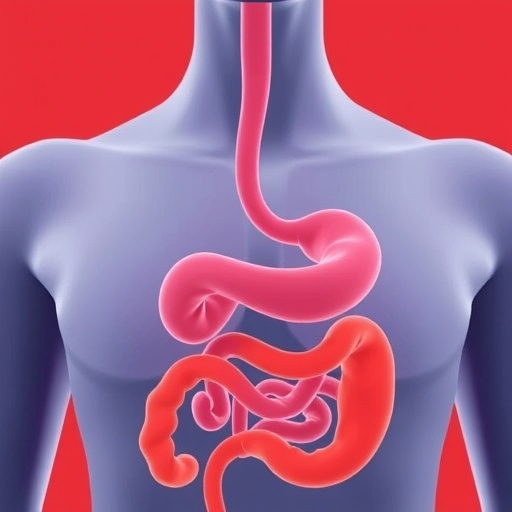In a groundbreaking development for cardiovascular medicine, researchers have unveiled compelling evidence highlighting the therapeutic potential of sacubitril/valsartan in combating hypertensive heart disease. The findings, published in the prestigious journal Nature Communications, document the results of the REVERSE-LVH randomized phase 2 trial—the first rigorous clinical exploration to assess the drug’s efficacy in reversing left ventricular hypertrophy (LVH) in hypertensive patients. This discovery charts a promising path forward for millions of individuals afflicted by the long-standing burden of hypertension-induced cardiac remodeling.
Hypertensive heart disease, characterized predominantly by pathological thickening of the left ventricular wall, poses an escalating risk worldwide. This maladaptive cardiac remodeling compromises heart function, escalating morbidity and mortality. Despite advances in antihypertensive therapies, reversal of established LVH remains elusive, driving an urgent need for novel interventions. Sacubitril/valsartan—a combined angiotensin receptor neprilysin inhibitor (ARNI)—has demonstrated marked benefits in heart failure with reduced ejection fraction, but its role in hypertensive cardiac remodeling demanded meticulous evaluation.
The REVERSE-LVH trial represents a pivotal step toward understanding sacubitril/valsartan’s impact beyond traditional heart failure endpoints. Conducted across multiple centers with stringent randomized control protocols, the trial enrolled hypertensive patients exhibiting quantifiable left ventricular hypertrophy as confirmed by cardiac magnetic resonance imaging (MRI). Participants were assigned either sacubitril/valsartan or standard antihypertensive therapy, with a treatment duration sufficient to capture meaningful structural and functional cardiac changes.
.adsslot_c2Ufn9szmF{ width:728px !important; height:90px !important; }
@media (max-width:1199px) { .adsslot_c2Ufn9szmF{ width:468px !important; height:60px !important; } }
@media (max-width:767px) { .adsslot_c2Ufn9szmF{ width:320px !important; height:50px !important; } }
ADVERTISEMENT
Cardiac MRI assessments revealed that sacubitril/valsartan induced a statistically significant reduction in left ventricular mass index compared to controls, indicating effective regression of hypertrophic remodeling. Notably, this regression was accompanied by improvements in myocardial strain parameters and diastolic function, suggesting enhanced myocardial mechanics and ventricular compliance. These mechanistic insights reinforce the drug’s multifaceted action—combating pathological growth stimuli and improving myocardial relaxation properties.
Furthermore, biomarkers reflective of cardiac fibrosis and inflammation showed favorable modulation following sacubitril/valsartan treatment. Circulating levels of collagen turnover markers and proinflammatory cytokines decreased significantly, reinforcing the hypothesis of reduced pathological extracellular matrix expansion and inflammatory stress within the myocardium. Such shifts in the myocardial microenvironment are crucial to halting fibrosis progression and improving ventricular compliance.
Beyond structural improvements, patients receiving sacubitril/valsartan experienced noticeable enhancements in functional status and quality of life measures. Symptom burden related to exertional dyspnea and fatigue showed meaningful reduction. These patient-centric outcomes underscore the translational impact of reversing LVH—not merely as a surrogate imaging endpoint but as tangible improvements in cardiac performance and daily living.
The trial also carefully monitored safety and tolerability, confirming that sacubitril/valsartan was well tolerated with no unexpected adverse events in the hypertensive cohort. This safety profile encourages broader consideration of ARNI therapy as an option in hypertensive patients at elevated risk for cardiac remodeling, potentially shifting clinical paradigms in hypertension management.
These insights herald a paradigm shift in treating hypertensive heart disease. Historically, efforts to manage hypertensive LVH focused primarily on blood pressure reduction, anticipating indirect cardiac benefits. However, REVERSE-LVH illuminates the power of directly targeting myocardial remodeling pathways, enabling regression of hypertrophy even when blood pressure control alone proves insufficient.
Clinicians and researchers alike eagerly anticipate further investigations to delineate long-term cardiovascular outcomes and evaluate sacubitril/valsartan’s role in diverse hypertensive populations. Additionally, mechanistic studies exploring gene expression profiles and signaling cascade alterations induced by ARNI treatment promise to deepen understanding of hypertrophic reversal processes.
Beyond academic interest, these findings have practical healthcare implications. Hypertensive LVH is a widespread yet undertreated condition linked to heart failure, arrhythmias, and sudden cardiac death. Introducing sacubitril/valsartan into the therapeutic arsenal could substantially mitigate this disease burden and reshape preventive cardiology strategies.
Moreover, the trial’s integration of sophisticated imaging modalities and biomarker panels sets a new standard for evaluating cardiac remodeling therapeutics. This comprehensive approach enables precise quantification of myocardial changes at both tissue and molecular dimensions, facilitating nuanced drug assessment and personalized therapy tailoring.
While the REVERSE-LVH trial’s phase 2 results are illuminating, ongoing phase 3 studies designed to confirm efficacy and safety over extended follow-up will be decisive. Optimizing dosing strategies, understanding patient subgroups that derive maximum benefit, and integrating ARNI therapy with existing guideline-directed treatments remain critical next steps.
In summary, the REVERSE-LVH randomized trial offers a beacon of hope for patients battling hypertensive heart disease. By harnessing sacubitril/valsartan’s unique pharmacological profile, researchers have demonstrated, for the first time, that regression of adverse left ventricular remodeling is achievable in hypertension—a milestone with profound therapeutic and prognostic implications. As this research influences future clinical practice, it may redefine standards of cardiovascular care and improve outcomes for millions worldwide.
The convergence of molecular innovation and clinical rigor exemplified in this work stands as a testament to the transformative potential of translational science. Sacubitril/valsartan’s emergence as a disease-modifying agent in hypertensive cardiac pathology underscores the evolving landscape of cardiovascular therapeutics—one that transcends symptom management and targets root causes at the cellular level.
Undoubtedly, these findings will stimulate vibrant scientific discourse and inspire new avenues of exploration into how combination therapies can synergistically address multifactorial cardiac diseases. The REVERSE-LVH trial marks a watershed moment, encouraging hope, optimism, and progress in the fight against one of cardiology’s most pervasive challenges.
Subject of Research: Effects of sacubitril/valsartan on hypertensive heart disease, specifically left ventricular hypertrophy reversal.
Article Title: Effects of sacubitril/valsartan on hypertensive heart disease: the REVERSE-LVH randomized phase 2 trial.
Article References:
Lee, V., Dalakoti, M., Zheng, Q. et al. Effects of sacubitril/valsartan on hypertensive heart disease: the REVERSE-LVH randomized phase 2 trial.
Nat Commun 16, 6981 (2025). https://doi.org/10.1038/s41467-025-62203-0
Image Credits: AI Generated
Tags: angiotensin receptor neprilysin inhibitorcardiac remodeling interventionscardiovascular medicine advancementsheart failure management strategieshypertension-induced heart complicationshypertensive heart disease treatmentsleft ventricular hypertrophy reversalMRI in cardiac assessmentrandomized phase 2 clinical trialsREVERSE-LVH clinical trial resultssacubitril valsartan therapy benefitstherapeutic options for hypertensive patients





